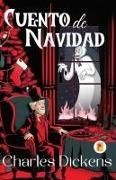Read more
Ebenezer Scrooge, un anciano avaro que desprecia la Navidad, recibe la visita en Nochebuena del fantasma de su difunto socio, Jacob Marley, y de tres espíritus: los fantasmas de la Navidad pasada, la presente y la venidera. A través de estas visitas, Scrooge confronta el dolor de su pasado, es testigo de las luchas de quienes lo rodean, especialmente su empleado Bob Cratchit y su enfermizo hijo Tiny Tim, y ve el destino solitario que le espera si no cambia.
Conmovido por estas revelaciones, Scrooge despierta la mañana de Navidad como un hombre transformado, abrazando la generosidad, el amor y el verdadero espíritu de la Navidad. Se convierte en una fuente de alegría y apoyo para los demás, asegurando la recuperación de Tiny Tim y difundiendo buena voluntad para todos.
Esta historia eterna de redención, compasión y el poder de las segundas oportunidades continúa resonando entre lectores de todas las edades.
About the author
Charles Dickens (1812-1870)
Charles Dickens was born on February 7, 1812, in Portsea, England. His parents were middle-class and suffered financially. When Dickens was twelve years old, his family faced financial crisis, which forced him to quit school and work in a shoe polish manufacturing factory. Dickens's mother and siblings eventually joined him. Dickens continued to work at the factory for several months. In the factory the horrific conditions haunted him throughout his life. Dickens never forgot the day when a senior boy in the warehouse took it upon himself to instruct Dickens how to do his work more efficiently.
As a young adult, Dickens worked as a law clerk and later as a journalist. He perceived the darker social conditions of the Industrial Revolution. A collection of semi-fictional sketches entitled Sketches by Boz earned him recognition as a writer. Dickens began to make money from his writing when he published his first novel, The Pickwick Papers in 1836. The Pickwick Papers was hugely popular and Dickens became a literary celebrity at the age of twenty-five. Dickens's themes included wealth and poverty, love and rejection, and the eventual triumph of good over evil. In 1836, Dickens married Catherine Hogarth, but after twenty years of marriage and their ten children, he fell in love with Ellen Ternan, an actress many years his junior. Soon after, Dickens and his wife separated. Dickens remained a prolific writer to the end of his life, and his novels - Great Expectations, A Tale of Two Cities, A Christmas Carol, David Copperfield, and Bleak House - continued to earn critical and popular acclaim. He died of a stroke in 1870, at the age of 58.

